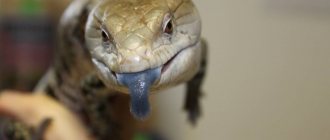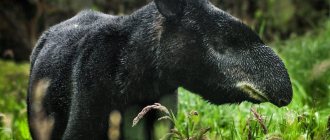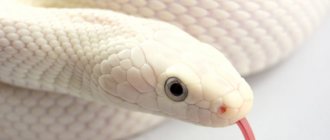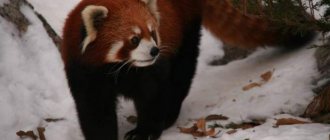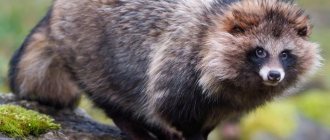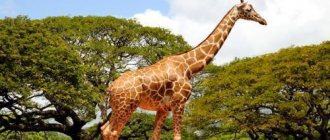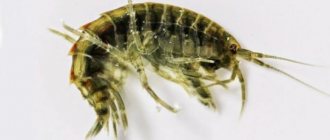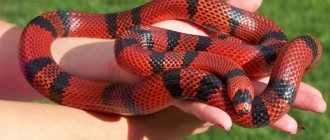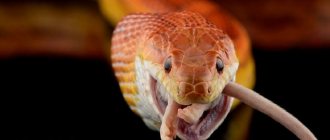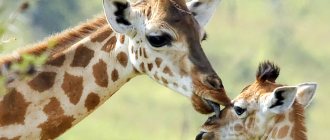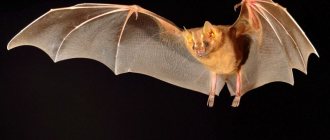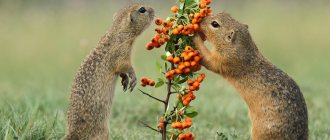Reptiles: who are they, what types are there: Pixabay At the sight of a reptile, many people are overcome by vague feelings: both scary and interesting. The ancestors of dinosaurs have an unusual appearance, predatory nature and unpredictable behavior. But if you get to know the characteristics of these creatures more closely, they will become more understandable and not so frightening.
General characteristics of reptiles
Like amphibians, reptiles are cold-blooded creatures .
In other words, their body temperature is determined by their surroundings. To some extent, reptiles are able to regulate their temperature by covering themselves against hypothermia. For example, in the winter season, animals hibernate, and during periods of extreme heat they begin hunting at night. Reptiles have tough skin covered with scales. The main task of which is to protect the body from drying out. For example, in turtles, upper protection is provided by a strong shell ; in crocodiles, there are hard plates of bone origin on the head and back.
Reptiles breathe only through the lungs. In some animal species, the lungs are the same size and equally developed, while in others, such as snakes and lizards, the right lung is larger and is located throughout the body cavity. Turtles have fixed ribs due to their shell, so the ventilation of the body is organized in a different way. Air enters the lungs during rocking movements of the front legs or during intense swallowing.
The bony skeleton of reptiles is quite well developed. The number and shape of ribs depends on the specific species, but all representatives of the class have them. Almost all turtles have fused bony plates of the shell and spine. Snakes have ribs designed for active crawling . In lizards, the ribs serve to support fan-shaped membranes for gliding in the air.
Most reptiles have a short tongue that cannot protrude. Snakes and lizards have a long tongue, divided in two, which can extend far from the mouth. For this species of animal these are the most important sense organs.
To protect themselves from the environment, small reptiles have original coloring. Turtles are reliably protected by a dense shell. Some snakes are poisonous.
In terms of reproductive organs, reptiles are similar to birds. As a rule, reptiles are oviparous animals. But in some species, eggs remain inside in the oviduct until hatching. This type includes some species of lizards and vipers.
Classification of reptiles and their distribution
Modern reptiles are divided into four orders:
- turtles (about 300 species);
- crocodiles (25 species);
- scaly (about 5,500 species of lizards and snakes);
- tuatara (tuatara).
The last order belongs to the only representative of beaked animals among reptiles.
Reptiles are distributed throughout the world . The greatest numbers are seen in warm areas. In regions with a cold climate and a lack of woody vegetation, reptiles are practically not found. Representatives of this class live on land, in water (fresh and salty) and in the air.
What do lizards eat?
Most, but not all, lizards are carnivores and feed on small insects, as well as terrestrial invertebrates such as snails and slugs, and larger prey (birds, mice and other animals).
Some squamates, such as marine iguanas, are herbivores - they feed on aquatic vegetation (mainly algae).
Ancient reptile fossils
Reptiles have been known since the Carboniferous period. They reached their largest sizes in the Permian and Triassic periods. At the same time, there was an increased reproduction of animals that populated more and more new territories. In the Mesozoic era, the dominance of reptiles was overwhelming, both on land and in water. It is not for nothing that this period was called the Age of Reptiles.
Turtles
One of the most famous species of reptiles are turtles. There are both marine and land representatives of animals. The species is distributed throughout the world. Animals can also be kept at home .
The most ancient representatives of turtles were discovered 200 million years ago. Scientists believe that they descended from a primitive species of cotylosaurs. Turtles are practically harmless animals, they are not dangerous to people. Animals of this species have a shell of a bone structure. On the outside, it is formed by numerous individual elements of horny tissue, which are connected by plates. Land turtles have excellent lung function for breathing. Aquatic representatives of the class breathe using the mucous membrane of the pharynx. The main feature of these animals is longevity. The average age of turtles exceeds the lifespan of any other reptile.
Crocodiles
Animals are one of the most dangerous species of reptiles. The origin of crocodiles is associated with ancient reptiles whose size exceeded 15 meters in length . Scientists were able to find the remains of ancient crocodiles on all continents of the globe. Modern representatives of this class have more conventional sizes. But among reptiles they still remain the largest species.
Almost all the time crocodiles are in the water. Only the ears, nose and eyes of the animal appear on the surface. Crocodiles swim with the help of webbed tails and paws. But at great depths, only single representatives of the class can exist - the comb species. Crocodiles' nests are located on land. In some cases, they also crawl out of the water to warm themselves.
Reptiles have a strong, powerful tail and are also characterized by high speed of movement on land. Therefore, crocodiles are extremely dangerous to humans. A sudden sudden burst can take people by surprise. Alligators are considered the most dangerous representatives of crocodiles.
Chameleons
This type of lizard is known to almost everyone. Reptiles are known for their unique coloration, which serves as a camouflage feature. An animal's skin can change color depending on environmental conditions. Chameleons live in trees .
Some people keep these cute creatures at home. Reptiles are quite finicky to care for. They need a spacious terrarium, which is equipped with special lamps. You will need wood, a small pond, heated floors and excellent ventilation. Chameleons feed on insects. Therefore, the owners will also have to take care of their availability.
Iguanas
Currently, there are more and more lovers of pets - iguanas. This representative of lizards also requires special care. Iguanas must be kept in a special terrarium that can maintain a certain temperature regime. For food, domestic iguanas prefer fresh fruits and vegetables, as well as greens. With good care and optimal living conditions, lizards at home can grow quite large. The maximum weight of iguanas is 5 kg . It is difficult to keep such a pet at home; it will require a large financial investment, as well as significant labor costs.
Iguanas are among those rare species of reptiles that molt. Most reptiles experience this period in two days, but in iguanas it lasts for several weeks.
Monitor lizards
There are about 70 species of monitor lizards. They live in different territories. The size of the animals is very impressive. Short-tailed monitor lizards have a length of about 20 cm, while other representatives have a much longer length (about 1 meter). The largest monitor lizards are the Komodo species. Their dimensions reach three meters in length, and their weight is 1500 kg. It’s not for nothing that such animals are called modern dinosaurs.
Monitor lizards are covered with large scales. They have strong paws with a tenacious grip and a powerful long tail . The animal's tongue is also large in size; at the end it is divided in half. Lizards can only smell with their tongue. The color of animals is dominated by gray and brown shades. Young representatives of the class are often found with spotted or striped scales. Monitor lizards live in regions with warm climates. They are most common in Australia, Africa and southern Asia. Depending on their habitat, monitor lizards are divided into two types. The first of them lives in a desert area with dry trees and shrubs. And the second is located closer to tropical forests and reservoirs. Some representatives of monitor lizards live on tree branches.
Geckos
Unique representatives of reptiles that are able to stick to any surface, even the smoothest. Geckos can climb smooth glass walls, hang from ceilings, and many other interesting things. The lizard is able to stay on the surface with just one paw.
Snakes
These are famous representatives of reptiles.
The main difference from other species is the body shape. Snakes have a long body, but do not have paired limbs, eyelids or an external auditory canal. Some of these characteristics are present in individual lizard species, but collectively such characteristics are only observed in snakes. The snake's body consists of three elements:
- head;
- body;
- tail.
Some representatives retained rudimentary forms of limbs. A large number of snake species are venomous. They have grooved or channeled teeth that contain venom. This dangerous liquid comes from the animal's salivary glands. All internal organs of a snake differ from standard indicators. They have an oblong shape. Animals do not have a bladder. The eyes have a cornea , which is formed from fused eyelids. Snakes that are diurnal have a transverse pupil, while nocturnal snakes are characterized by a vertical pupil. Because Since animals do not have an auditory canal, they can only hear loud sounds.
Snakes
These are representatives of one of the varieties of snakes.
Their main feature is that they are not poisonous. Snakes have bright scales with a large ribbed surface. Animals are common near water bodies. Amphibians and fish serve as food for them. Sometimes snakes manage to catch a bird or small mammal. Such snakes do not kill their prey; they swallow it whole. If the snake senses danger, it pretends to be dead . And when attacked, a liquid with an extremely unpleasant odor is released from the mouth. Snakes breed on plant soils covered with damp moss or natural debris.
The list of modern reptiles can be continued for a very long time. All representatives of the class have certain similarities characteristic of this type of animal, as well as clear differences. Such animals are of great interest to scientists and hobbyists from all over the world. Their unique features can tell a lot.
Order Beakheads
Beakheads (Rhynchocephalia) are an order of lizard-like reptiles that includes only one living genus, tuatara (tuatara). In turn, this genus (Sphenodon) includes two species: Sphenodon punctatus and Sphenodon guntheri. According to some sources, the genus contains one species, Sphenodon punctatus, which is divided into two subspecies - Sphenodon punctatus punctatus and Sphenodon punctatus guntheri. Representatives of the order live only in some areas of New Zealand.
Despite its current lack of diversity, the order Rhynchocephalia once included a large number of genera and families, and its evolution can be traced back to the Mesozoic era.
Hatteria grows up to 80 cm in length, from head to tail, and weighs up to 1.3 kg. This animal has a spiny crest along its back, which is especially pronounced in males. Tuatara are also distinguished by the presence of a pronounced parietal eye (third eye). Animals can hear, although there is no external ear and hatteria have unique skeletal features.
Tuatara, like many of New Zealand's endemic animals, are endangered due to habitat loss and the introduction of invasive predators.
